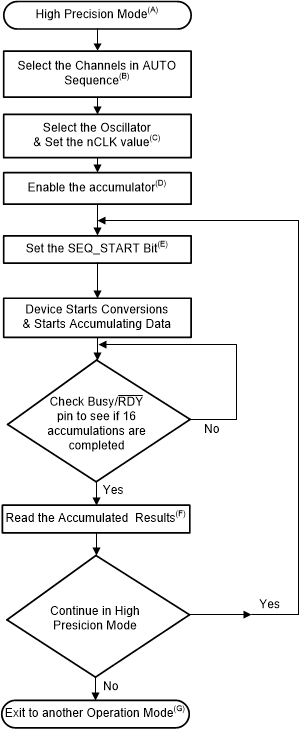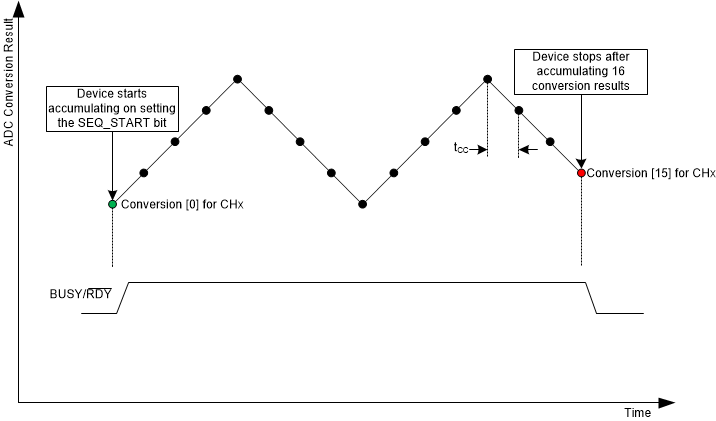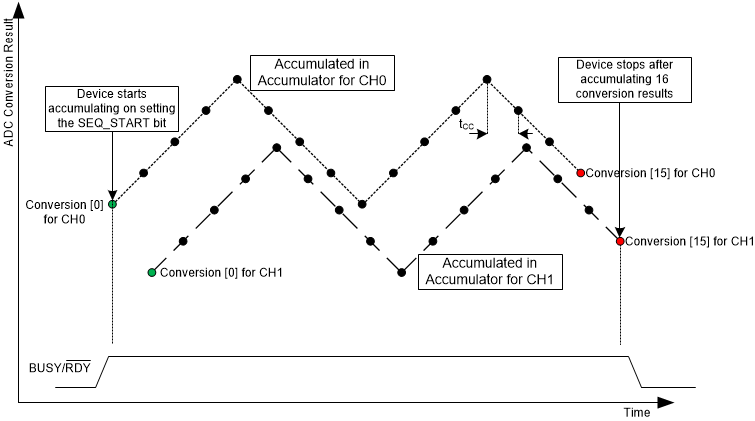SBAS891B November 2017 – September 2022 ADS7142-Q1
PRODUCTION DATA
- 1 Features
- 2 Applications
- 3 Description
- 4 Revision History
- 5 Pin Configuration and Functions
-
6 Specifications
- 6.1 Absolute Maximum Ratings
- 6.2 ESD Ratings
- 6.3 Recommended Operating Conditions
- 6.4 Thermal Information
- 6.5 Electrical Characteristics: All Modes
- 6.6 Electrical Characteristics: Manual Mode
- 6.7 Electrical Characteristics: Autonomous Modes
- 6.8 Electrical Characteristics: High Precision Mode
- 6.9 Timing Requirements
- 6.10 Switching Characteristics
- 6.11 Timing Diagrams
- 6.12 Typical Characteristics: All Modes
- 6.13 Typical Characteristics: Manual Mode
- 6.14 Typical Characteristics: Autonomous Modes
- 6.15 Typical Characteristics: High-Precision Mode
-
7 Detailed Description
- 7.1 Overview
- 7.2 Functional Block Diagram
- 7.3 Feature Description
- 7.4 Device Functional Modes
- 7.5 Programming
- 7.6 Register Map
- 8 Application and Implementation
- 9 Device and Documentation Support
- 10Mechanical, Packaging, and Orderable Information
Package Options
Mechanical Data (Package|Pins)
- DQC|10
Thermal pad, mechanical data (Package|Pins)
- DQC|10
Orderable Information
7.4.4 High-Precision Mode
High-precision mode increases the accuracy of the data measurement by accumulating ADC conversion results. This accumulation is useful for applications where the level of precision required to accurately measure the sensor output must be higher than 12 bits.
For this mode, set the OPMODE_SEL register to 111b. In this mode, the ADC starts converting and starts accumulating the conversion results in an accumulator when the SEQ_START bit is set. The ADC stops accumulating after 16 conversion results. The accumulator contains one 16-bit conversion result. The ADC has an accumulator for each analog input channel. If the operation of the ADC is aborted in high-precision mode before the BUSY/RDY pin goes low because the SEQ_ABORT bit is set by the user, the ADC provides invalid data and the internal data buffer (Figure 7-8), provides zeroes as output. In this mode, the BUSY/RDY can wake up the MCU or host from sleep or hibernation when accumulation completes. The steps for configuring the ADC into high-precision mode are illustrated in Figure 7-23.

Abort the current sequence by setting the SEQ_ABORT bit before changing the ADC operation mode or ADC configuration.
Figure 7-24 and Figure 7-25 show the accumulation of conversion results in high-precision mode.
 Figure 7-24 High-Precision Mode With Single-Channel Configurations
Figure 7-24 High-Precision Mode With Single-Channel Configurations Figure 7-25 High-Precision Mode With Dual-Channel Configurations
Figure 7-25 High-Precision Mode With Dual-Channel Configurations